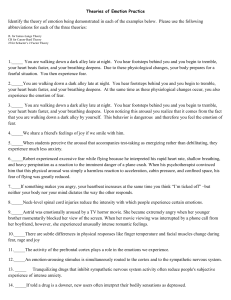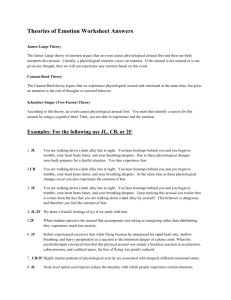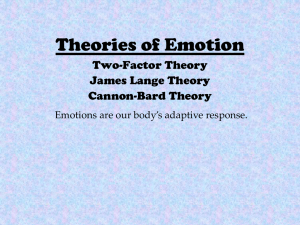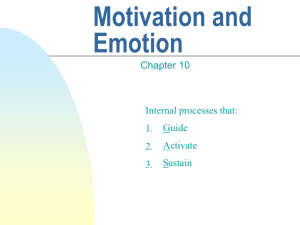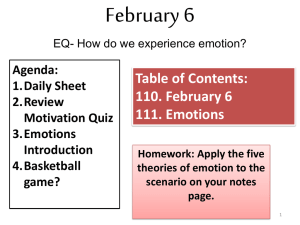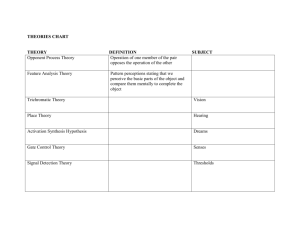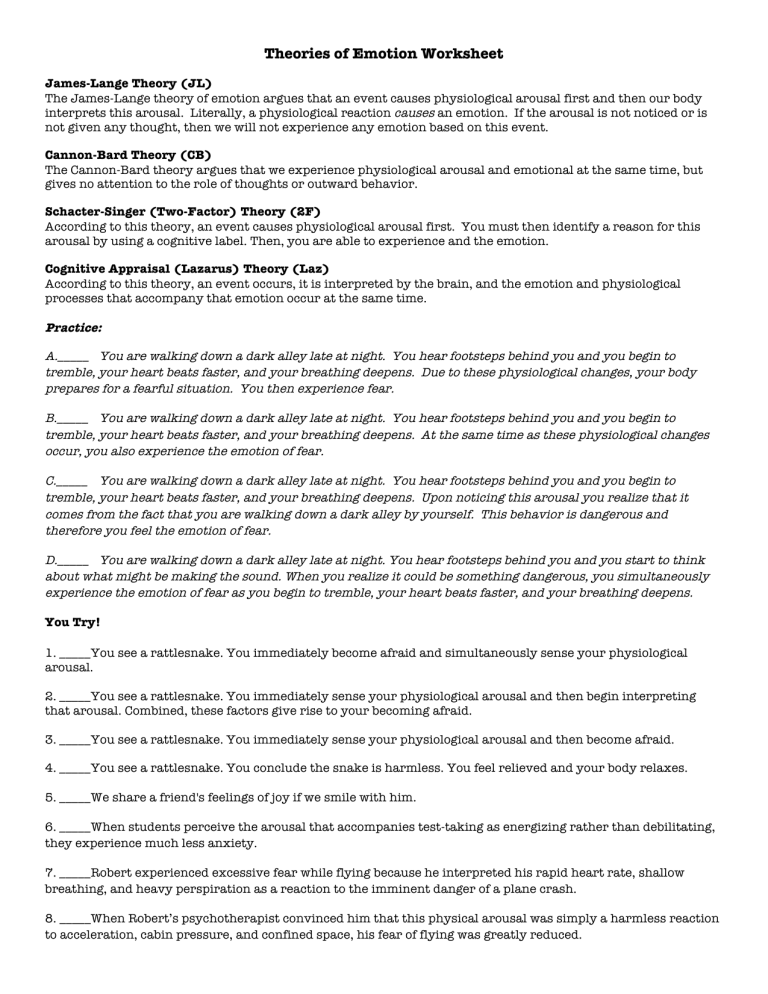
Theories of Emotion Worksheet James-Lange Theory (JL) The James-Lange theory of emotion argues that an event causes physiological arousal first and then our body interprets this arousal. Literally, a physiological reaction causes an emotion. If the arousal is not noticed or is not given any thought, then we will not experience any emotion based on this event. Cannon-Bard Theory (CB) The Cannon-Bard theory argues that we experience physiological arousal and emotional at the same time, but gives no attention to the role of thoughts or outward behavior. Schacter-Singer (Two-Factor) Theory (2F) According to this theory, an event causes physiological arousal first. You must then identify a reason for this arousal by using a cognitive label. Then, you are able to experience and the emotion. Cognitive Appraisal (Lazarus) Theory (Laz) According to this theory, an event occurs, it is interpreted by the brain, and the emotion and physiological processes that accompany that emotion occur at the same time. Practice: A._____ You are walking down a dark alley late at night. You hear footsteps behind you and you begin to tremble, your heart beats faster, and your breathing deepens. Due to these physiological changes, your body prepares for a fearful situation. You then experience fear. B._____ You are walking down a dark alley late at night. You hear footsteps behind you and you begin to tremble, your heart beats faster, and your breathing deepens. At the same time as these physiological changes occur, you also experience the emotion of fear. C._____ You are walking down a dark alley late at night. You hear footsteps behind you and you begin to tremble, your heart beats faster, and your breathing deepens. Upon noticing this arousal you realize that it comes from the fact that you are walking down a dark alley by yourself. This behavior is dangerous and therefore you feel the emotion of fear. D._____ You are walking down a dark alley late at night. You hear footsteps behind you and you start to think about what might be making the sound. When you realize it could be something dangerous, you simultaneously experience the emotion of fear as you begin to tremble, your heart beats faster, and your breathing deepens. You Try! 1. _____You see a rattlesnake. You immediately become afraid and simultaneously sense your physiological arousal. 2. _____You see a rattlesnake. You immediately sense your physiological arousal and then begin interpreting that arousal. Combined, these factors give rise to your becoming afraid. 3. _____You see a rattlesnake. You immediately sense your physiological arousal and then become afraid. 4. _____You see a rattlesnake. You conclude the snake is harmless. You feel relieved and your body relaxes. 5. _____We share a friend's feelings of joy if we smile with him. 6. _____When students perceive the arousal that accompanies test-taking as energizing rather than debilitating, they experience much less anxiety. 7. _____Robert experienced excessive fear while flying because he interpreted his rapid heart rate, shallow breathing, and heavy perspiration as a reaction to the imminent danger of a plane crash. 8. _____When Robert’s psychotherapist convinced him that this physical arousal was simply a harmless reaction to acceleration, cabin pressure, and confined space, his fear of flying was greatly reduced.
